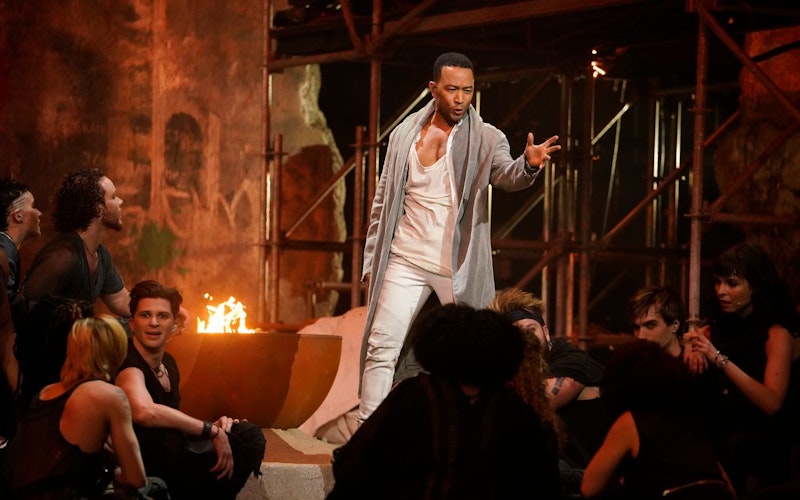
TV
Fashion and Incarnation in Jesus Christ Superstar Live
There were two things I heard over and over again on Easter this year: the familiar, traditional refrain, “Christ is risen, Alleluia,” and praise for Jesus Christ Superstar: Live in Concert, NBC’s televised update of the 1970 rock opera.
For fans of the original production, this Jesus Christ Superstar opened as you might expect: with a guitar solo that ushered in Judas (Brandon Victor Dixon), who is in confusion and distress. The soloist is perched high on scaffolding, wearing ripped jeans and a cowl neck sweater, posing like “Slash” of Guns N’ Roses fame.
Indeed, everything in Jesus Christ Superstar Live is a nod to something else. The primary narrative is ancient, of course, a composite of the gospel stories of Jesus’ life, ministry, trial, death, and resurrection. The original rock opera incorporated 1960s catchphrases and avante garde (at the time ) interpretations of race, class, and gender. Now we have this live adaptation, complete with punk-rock disciples sporting tattooed arms and shaved heads. Jesus, meanwhile, is played by John Legend, wearing a humble tunic that he might have purchased at H&M or Old Navy.
Sara Bareilles, as Mary Magdalene, gave my favorite performance, belting out the anguished lyrics of “I Don’t Know How to Love Him” in a simple, autumnal, gold-toned dress. She’s the only one wearing light and bright clothing. But as a friend pointed out, her role could have been a bit more three-dimensional. In 2018, we deserve a Mary Magdalene with more autonomy, more depth, more personhood. (We know Sara Bareilles has all of that!)
John 1:14 says, “The Word became flesh and dwelled among us.” Or, as Eugene Peterson puts it: “The Word became flesh and blood and moved into the neighborhood.” In Jesus Christ Superstar Live, that “neighborhood” is complex, allowing for new ways of understanding the Incarnation. The original gospels, the 1970 rock opera, and this 2018 contemporary adaptation mix and match in provocative ways.
Everything in Jesus Christ Superstar Live is a nod to something else.
My New Testament professor in seminary used to say, “Every translation is an interpretation.” The gospel continues to be translated, interpreted, and examined in today’s context. With that comes the reminder of how scandalous the Incarnation is. What does it look like when Jesus “becomes flesh” in 2018? Who are the “flesh” he preaches to, blesses, loves? As a mainline Protestant minister, I find these questions, which are inherent to Jesus Christ Superstar, to be especially provocative. The early followers of Jesus, as represented in Jesus Christ Superstar Live, hardly look like the people in my pews.
It kind of makes you wonder: what would happen if Jesus showed up in 2018? Not just the televised and highly tweeted live production, but the actual man? What would he look like? In 1970, he was depicted as long-haired, light-skinned, a bit temperamental, and wearing a tattered robe. In 1995 Joan Osborne wondered if he rode the bus to get where he needed to go. In 2018, thanks to Jesus Christ Superstar Live, we see Jesus portrayed by an African-American. And considering all of the harm done to black “flesh” in the United States, this adds an intense layer to the Incarnation.
Where does the gospel end and our cultural containers for it begin? For me, I hope to not lose sight of the provocative message Jesus proclaimed 2,000 years ago. It was my edgy, teenage self who first grabbed hold of that truth and fused it with my own offbeat identity. Over time, with age and comfort in the established church, I’m sure that I look more and more like the congregational surroundings I inhabit. I wonder, what exactly is the “flesh” that Christ claims and blesses? Perhaps it’s something like what we see in Jesus Christ Superstar Live.
Topics: TV